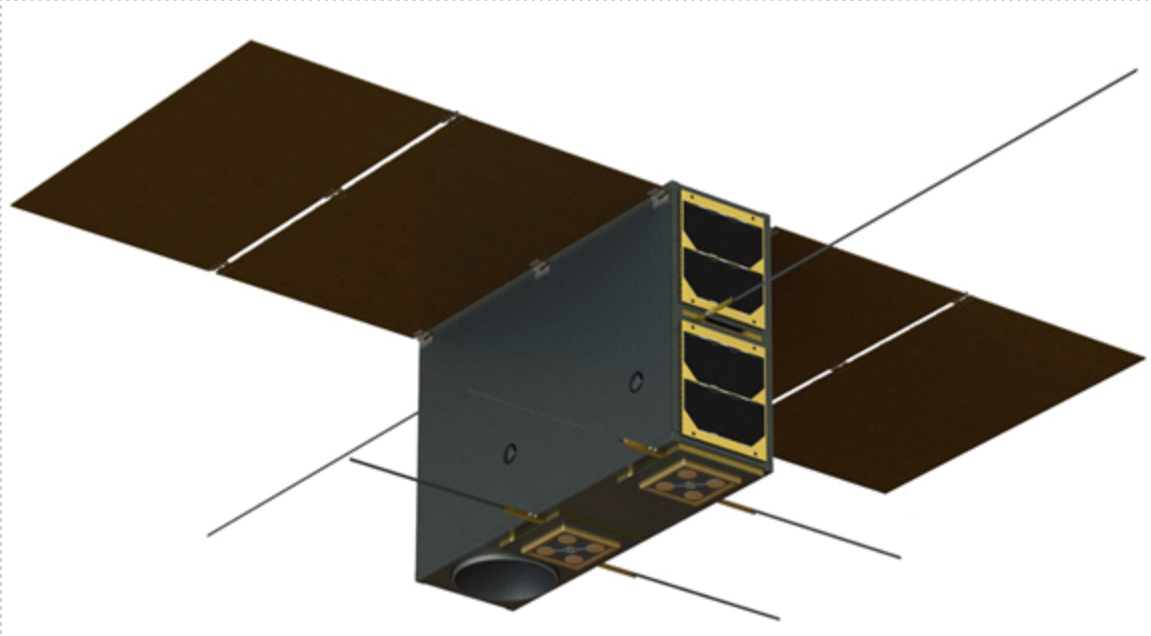
PRODUCTS

SCS SPACE HERITAGE
The Satellite Systems of SCS Space is the culmination of best of breed technology, reliable satellite components, world class environmental test facilities and experienced satellite system engineering to create a new class of operational small satellites that sets a new price/performance benchmark. The advances in payload technology, miniaturisation of electronics and standardised mechanical engineering offers new small satellite systems that are suitable for operational missions in Low Earth Orbit. The satellite systems offered by SCS Space have their roots in technology with space heritage and space systems engineering.

nSight-2 3U nano-satellite
nSight-2 is a 3U nano-satellite with a mass of less than 6 kg and a 3 year design lifetime. With the Mantis imager (baseline) a multi-spectral dataset of up to 6 spectral lines with 16 m GSD pixels or a 32 m hyperspectral dataset can be collected (decision to be made before final commencement). The spatial resolution (GSD) of 16m or 32m is at a swath width of 32 km. There is 128 GigaByte storage onboard.
The imager is based on experience with the smaller Gecko imager, which has achieved space heritage and been operating successfully on the nSight-1 CubeSat since 25 May 2017 and the bus on the nSight-1 2U nanosatellite mission.
nSight-3 6U nano-satellite
nSight-3 is a 6U nano-satellite with a mass of 12 kg and a 5 year design lifetime. With the Chameleon imager (baseline) a hyperspectral dataset of 29 m and a panchromatic dataset of 6m per pixel can be collected. From an orbital altitude of 500 km the hyperspectral sensor provides images with a spatial resolution (GSD) of 9.6 m and swath width of 20 km. The panchromatic sensor provides a spatial resolution of 6m with a swath of 20km.
The satellite bus has its heritage in the nSight-1 mission, which has achieved space heritage and been operating successfully for its design lifetime from its launch on 25 May 2017.

SCS SPACE - LEADERS IN INNOVATIVE SPACE TECHNOLOGY
Dr Sias Mostert, CEO and co-founder of SCS Space, has been an active member of the space industry in South Africa since 1992. He started his career in space engineering as Development Manager on the SunSat programme at Stellenbosch University from 1992 and was one of the founding members of SunSpace in 2000. He continues to support the space community through serving as a member of the International Academy of Astronautics (IAA) and as one of the Trustees of the African Association of Remote Sensing of the Environment (AARSE).

nSight1
SCS Space - Proudly South African Aerospace Pioneers and Consultants
The launch in 2017 of nSight-1, South Africa’s first commercially developed nanosatellite, built on the space heritage of two pioneering micro-satellites SunSat and Sumbandilasat.
The advances in payload technology, miniaturisation of electronics and standardisation of mechanical interfaces offers small satellite systems at never before price points, that are suitable for operational missions in Low Earth Orbit.
The satellite systems offered by SCS Space have their roots in technology with space heritage and space systems engineering with a heritage since the start of Sunsat in 1992.
nSight1 was developed to demonstrate capability and to obtain flight heritage on subsystems that include a novel multispectral imager.
The nSight-1 satellite is a 2U CubeSat that is part of the European Commission’s QB50 constellation that was launched and deployed from the ISS (InternationalSpace Station) in the second quarter of 2017